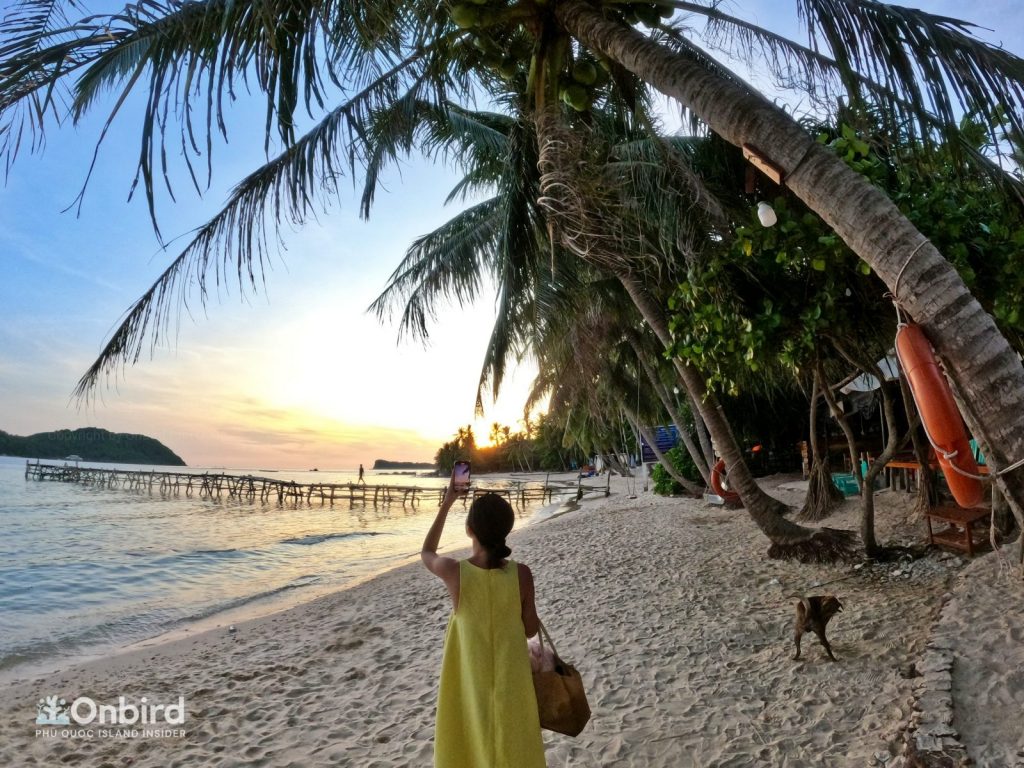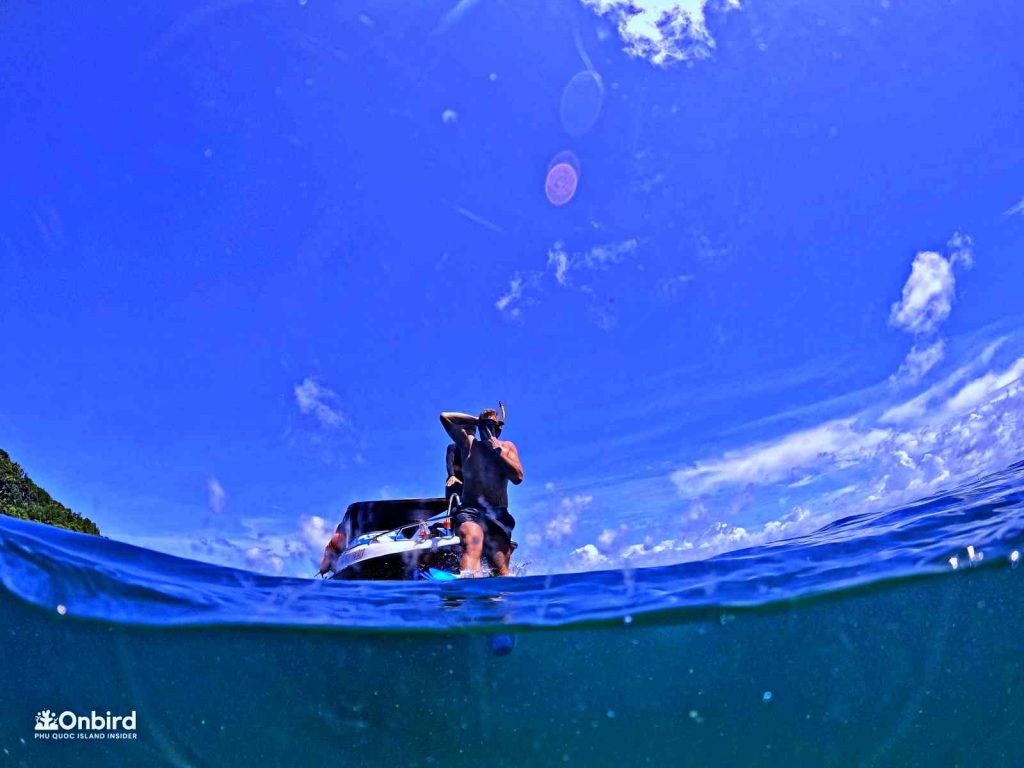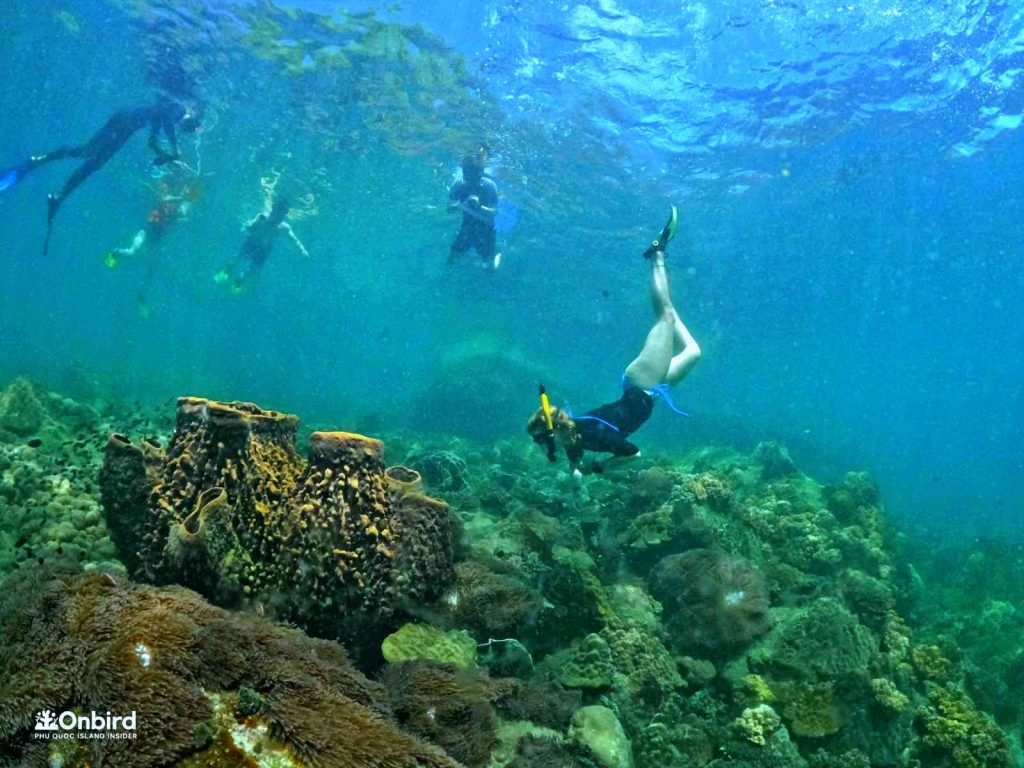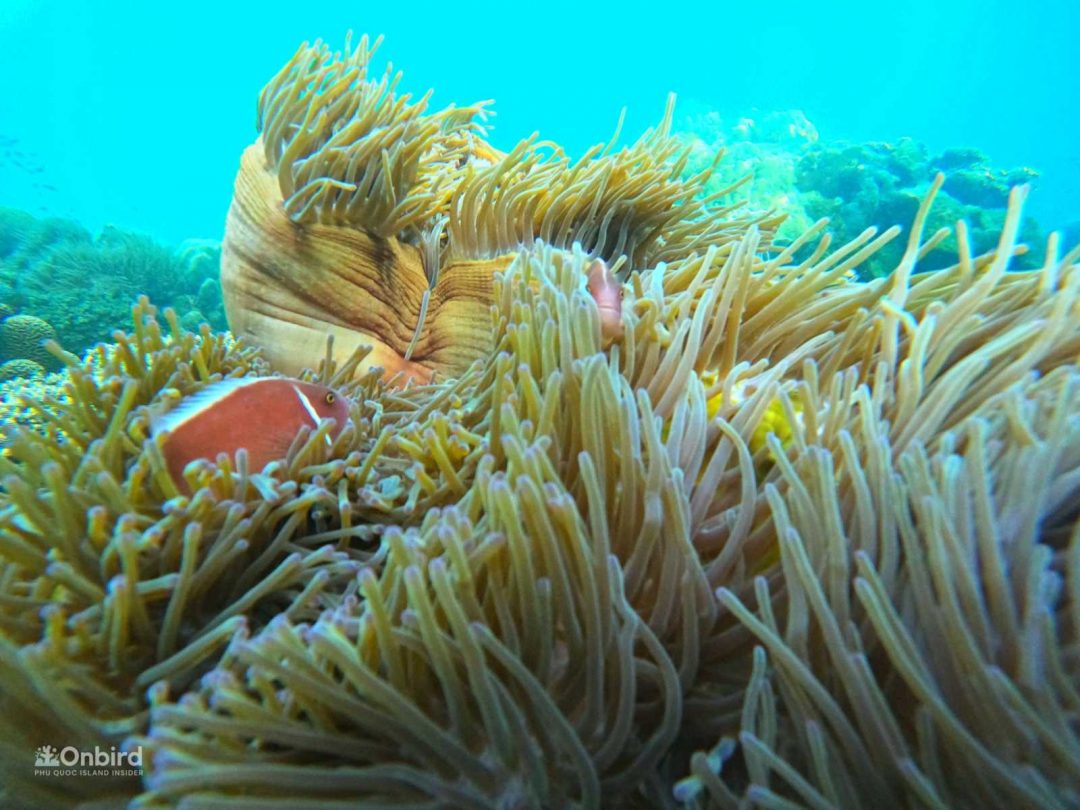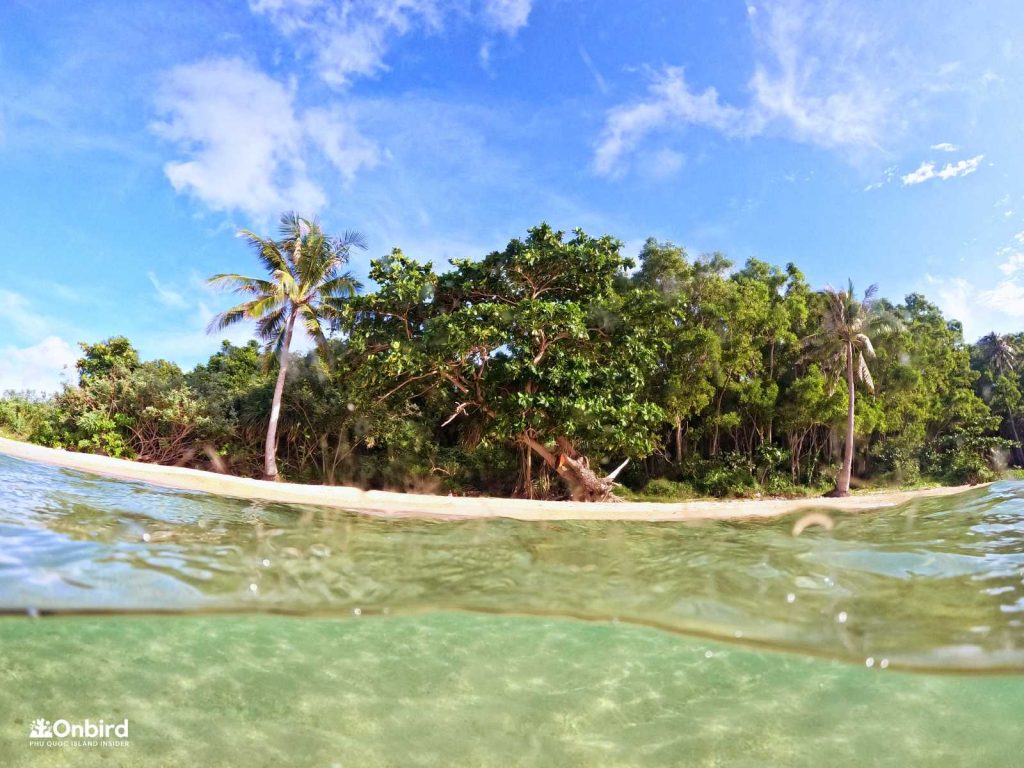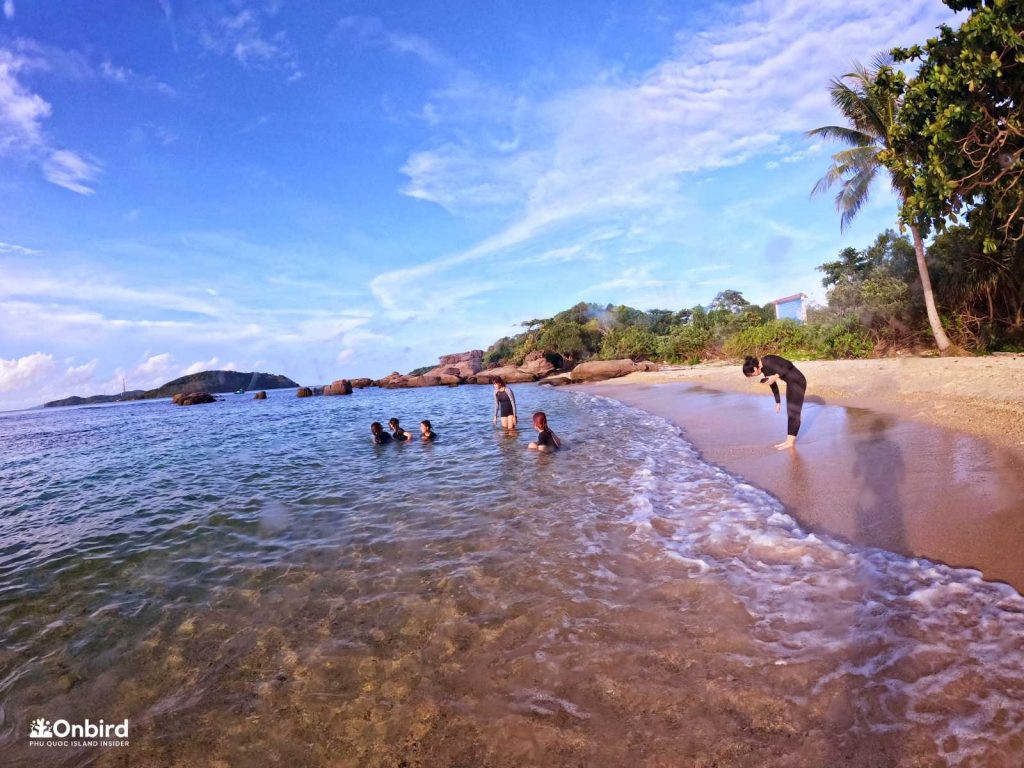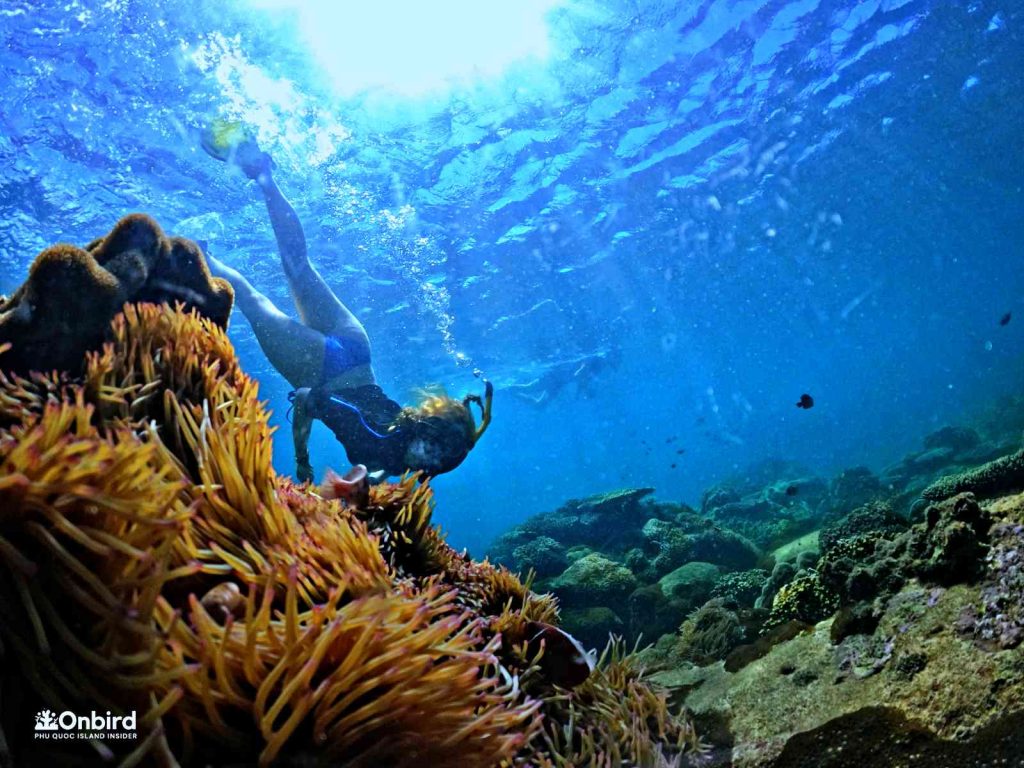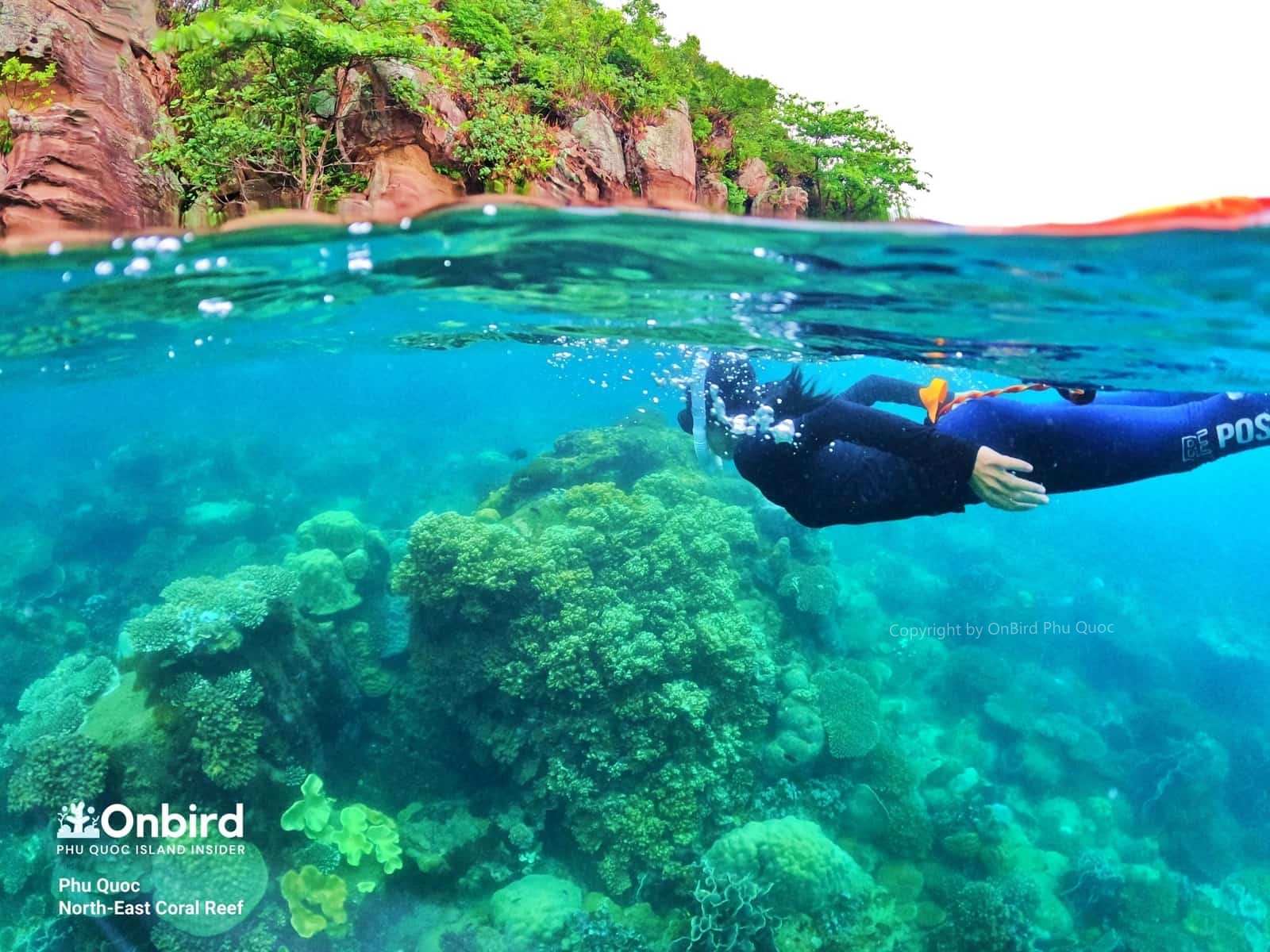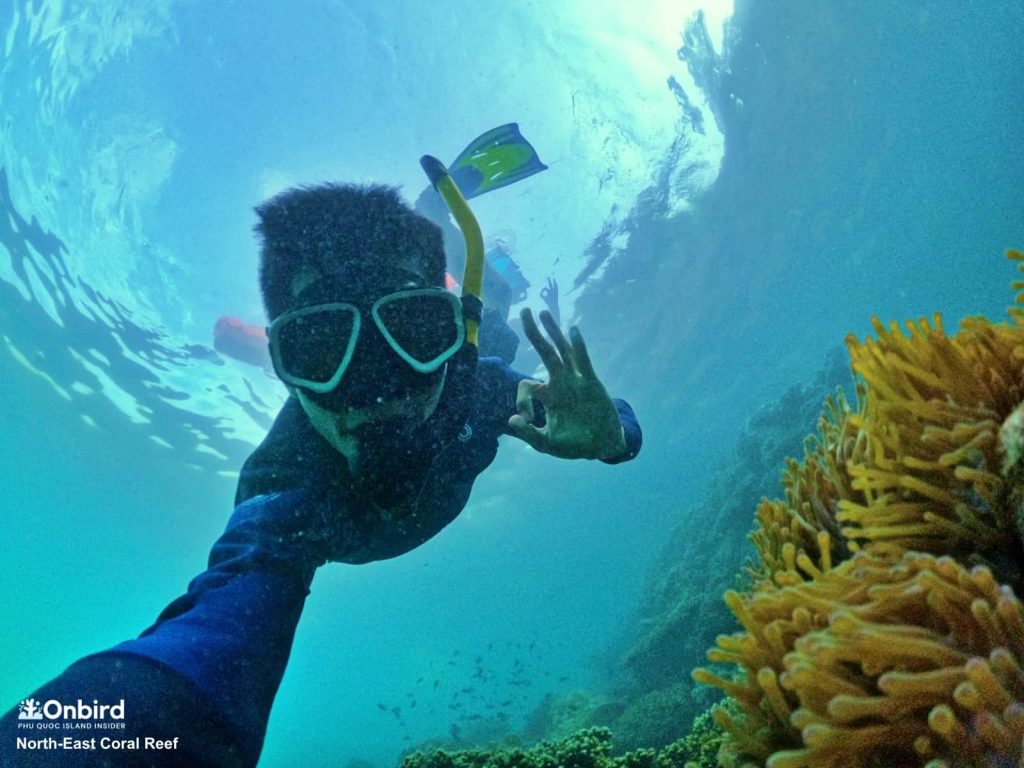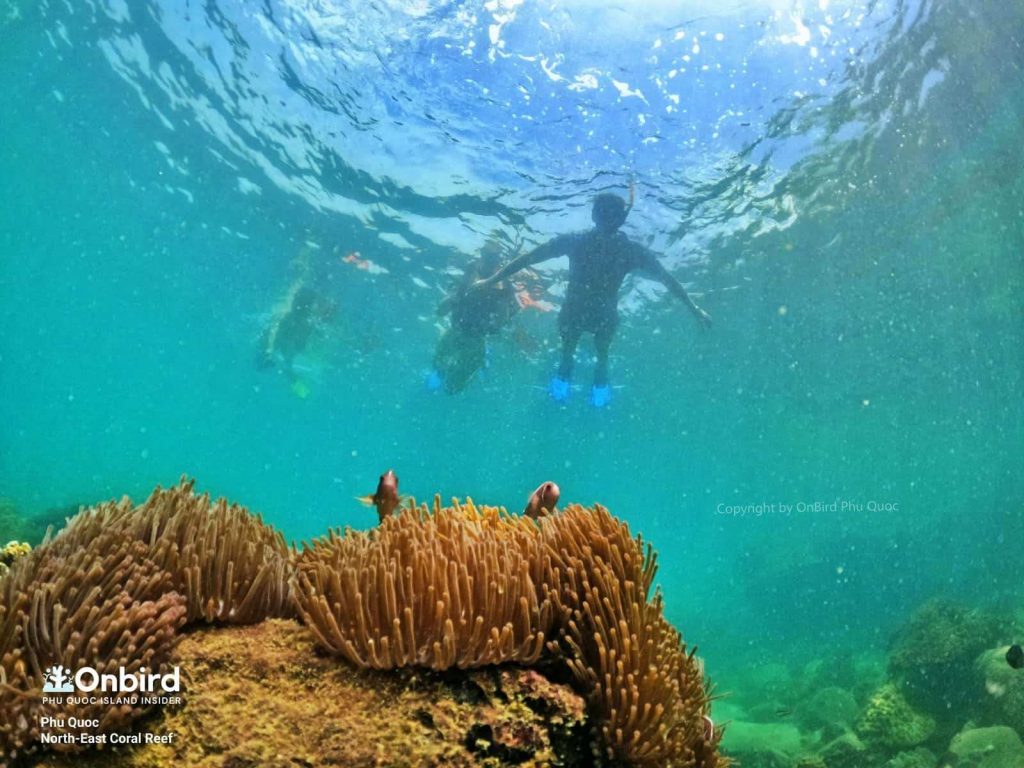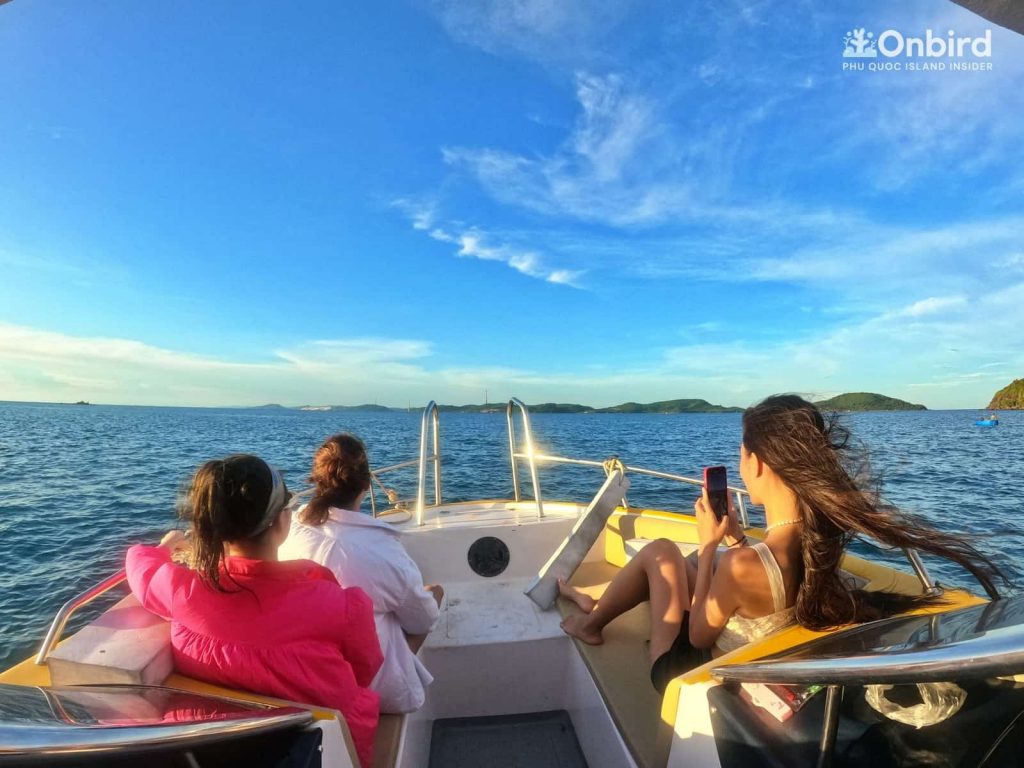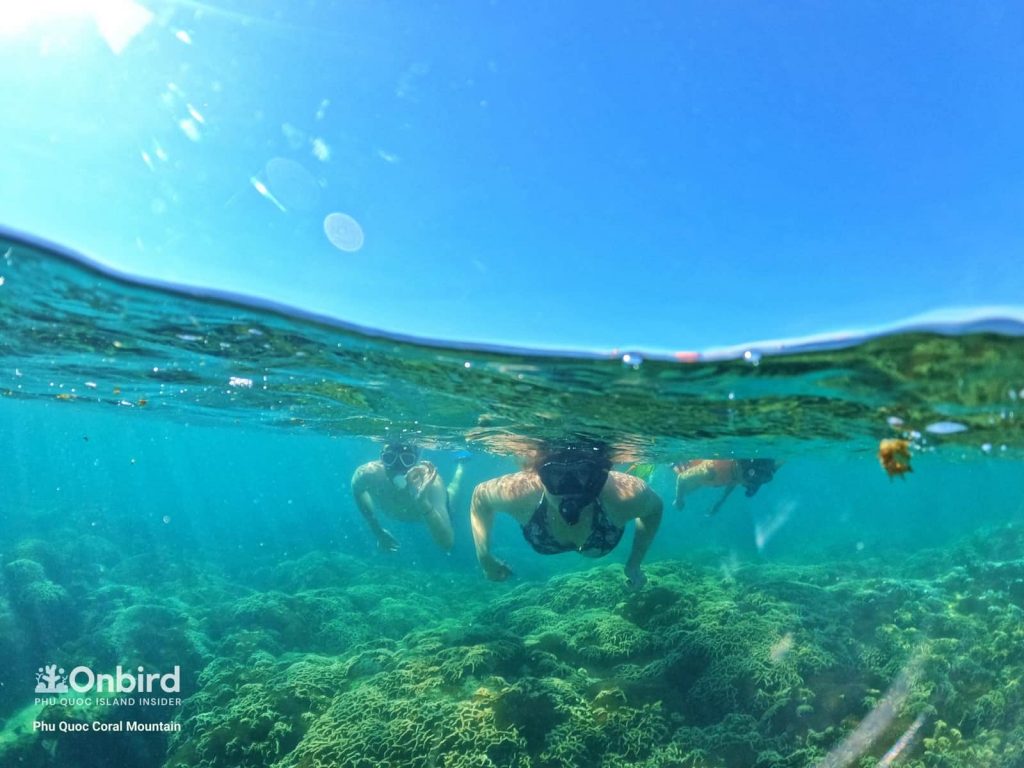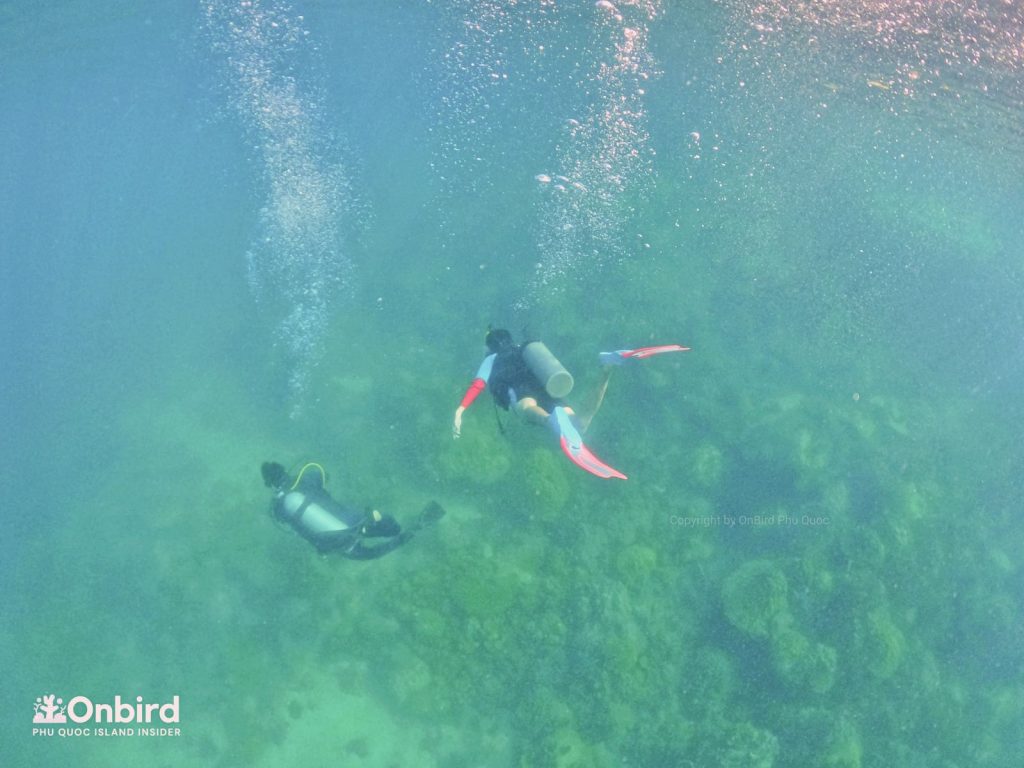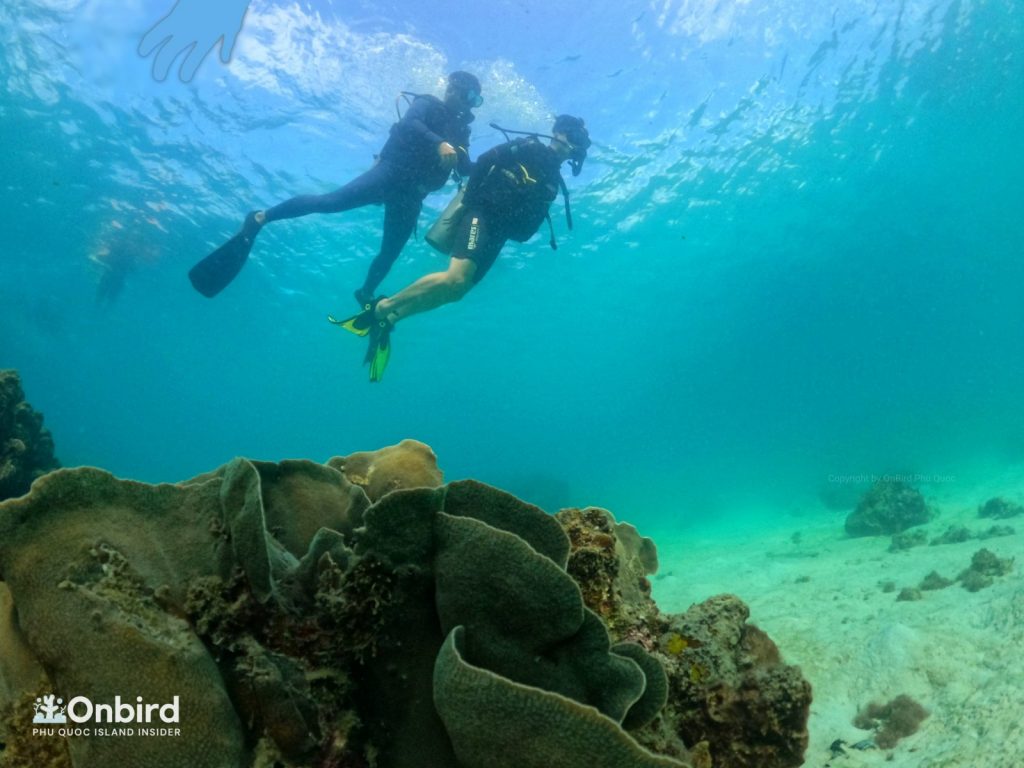- The average underwater visibility in South Phu Quoc is better in the rainy season rather than in the dry season.
- It is summer weather in the early rainy season, especially from May to July, much more sunny, with less rain
- There are not always persistent rains between July – October (peak time of the rainy season) but just on the days of being under the influences of tropical storms
- A heavy rain and thunderstorm can be ceased or stopped within 30 – 60 minutes (completely changed)
- From May to October there are still many days of favorable water conditions for snorkeling & scuba diving
If you seek an expert consultant for advanced weather and water conditions of Phu Quoc Island, Vietnam, kindly reach out to OnBird for comprehensive assistance.
The weather in Phu Quoc Island, Vietnam typically encompasses two distinct seasons: Sunny and Rainy. The Sunny season, synonymous with the dry season, spans from October through April, while the Rainy season, heralding the onset of summer, extends from May to October. Remarkably, Phu Quoc enjoys sunny weather throughout the year.
This article meticulously presents findings derived from the observations and research conducted by OnBird Phu Quoc regarding the weather variations (including rainfall, sunshine, and tropical storms) and sea conditions (such as sea waves, temperature, and currents) on Phu Quoc Island throughout the year. This information is particularly beneficial for tourists, travelers, and travel agencies seeking comprehensive weather details to facilitate trip planning and vacation arrangements on Phu Quoc Island, Vietnam.
Based on observations regarding the monthly weather patterns of Phu Quoc to tailor appropriate sea-based activities for each phase and to establish a proprietary weather forecasting model, we have categorized the weather of Phu Quoc into four distinct phases:
MAIN CONTENTS
1. DRY SEASON (FROM OCTOBER – END OF APRIL)
Some weather characteristics of the dry season in Phu Quoc are typically segmented into three distinct phases.
During the initial phase of the dry season in October, occasional rainfall persists, influenced by storms and tropical depressions, occurring at night, early morning, or during the day. Despite intermittent rainy spells, Phu Quoc experiences predominantly sunny days. The northeast monsoon affects the island’s sea conditions, leading to waves along the east coast, spanning from Thom Beach to Bai Sao and Bai Kem, continuing to the southern coast of Mui Ong Doi near the Premier Village resort. The sun shines intensely, while the sea maintains a refreshing coolness. Subsequently, from October to November and December to February, the sea temperature drops to approximately 25 to 26 degrees Celsius. Transitioning into March and April, the sea gradually warms up during this period.

October to November: Phu Quoc marks the seasonal shift from the rainy season to the dry season:
- Rainfall: markedly reduced, sunshine begins to appear evenly, the sky is clear and cloudy, but there may still be heavy rain in early October or rain at night and early morning or due to the influence of tropical depression or storms forming in the Vietnam East Sea.
- Sea Waves: The water on the west coast tends to calm down, while the east coast begins to experience gentle waves. This phenomenon occurs due to sporadic rainfall, causing the seawater to become cloudy on the subsequent day after the rain.
- Water temperature: 28 – 29 Degrees Celcius, cool water
- Water current direction change: During this period, visitors to Sao Beach and Khem Beach may notice a significant influx of organic water hyacinth drifting from the mainland of Vietnam towards the Eastern Coast of Phu Quoc, indicating a change in water current direction.
November to February: Phu Quoc experiences the dry season, influenced by the onset of the Northeast monsoon:
- Rainfall: The rainy season is drawing to a close, with the weather shifting towards the northeast monsoon. Days are characterized by sunshine, while nights grow cooler due to the influx of cold air from the northeast monsoon, affecting the island’s climate.
- Sea Waves: The waters on the west coast tend to be tranquil, while those on the east coast are characterized by waves. Additionally, the waters on the West Coast exhibit greater clarity.
- Water temperature tends to be cool: 25 – 27 Degrees Celcius, occasionally bordering on cold, particularly during December and February, coinciding with the Christmas (Noel) and Lunar New Year celebrations in Vietnam.
March – April: Transition from the dry season to the rainy season:
From March to mid-April, Phu Quoc is considered one of the most enchanting periods of the year. During this time, rainfall is minimal, the sea temperature rises, the waters are typically serene, and the sunsets are spectacular. As April draws to a close, the onset of summer marks the beginning of Phu Quoc’s rainy season. While heavier rains may occur, they are brief and moderate. This timeframe presents an optimal opportunity to engage in marine activities such as snorkeling and scuba diving to explore the captivating coral reefs of Phu Quoc.
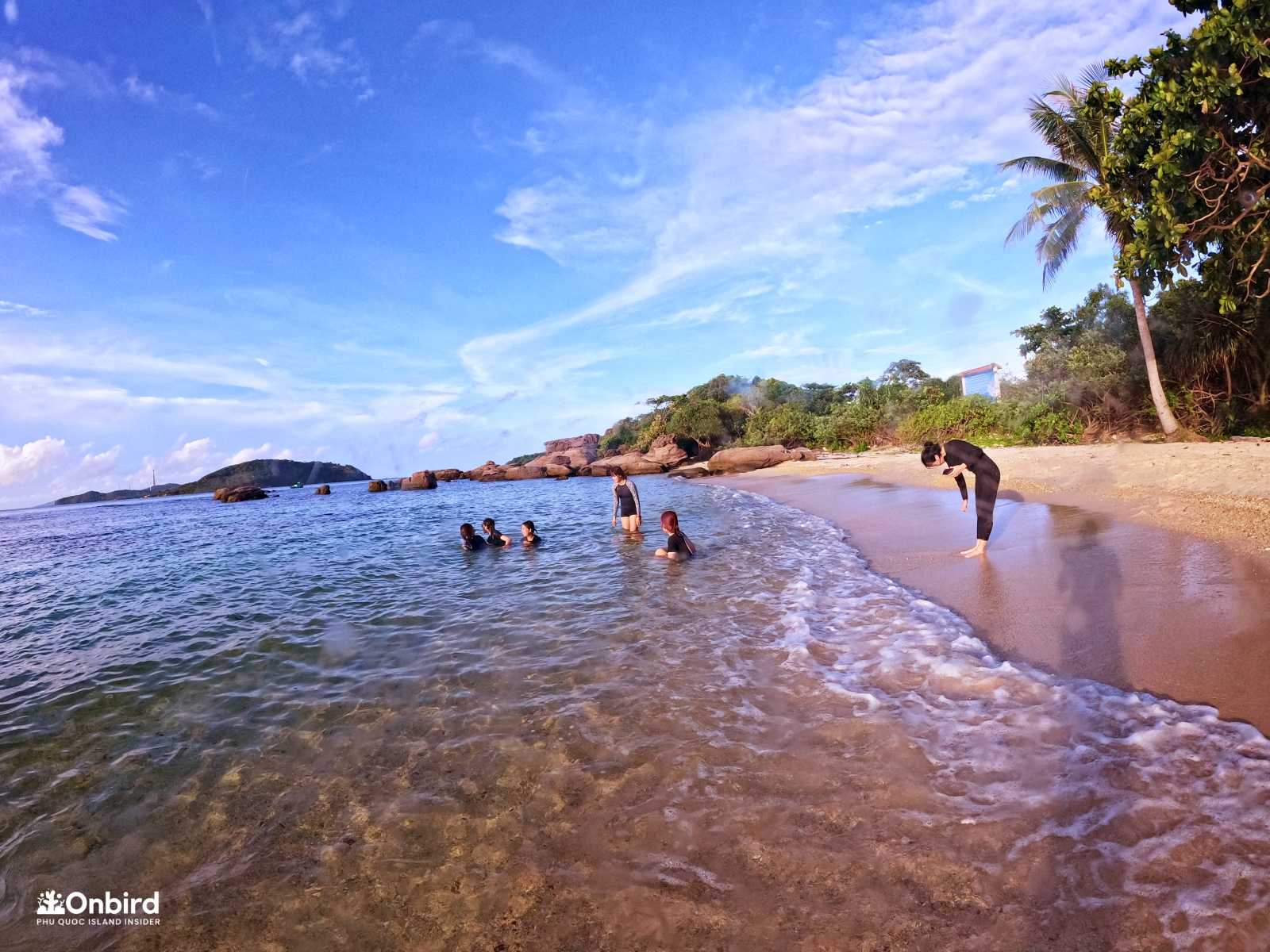
2. RAINY SEASON (FROM MAY – OCTOBER)
It is not persistent rain. Phu Quoc’s rainy season is divided into 2 phases like other areas in Vietnam, but due to its particular location near the equator, the rainy season here is more pronounced than in other regions of Vietnam, but overall it is still divided into two phases. into two main periods: season transition and peak time with persistent rains.
A Video of soft-adventure snorkeling (Whole year operated) recorded in August 2023 by OnBird Phu Quoc.
May – the end of July: Season transition – early rainy season
This is also the summer in Vietnam and Phu Quoc, after small rains, scattered at the end of April and can last until early May, scattered and not ominous rains, called cloud rain, In the central area of Duong Dong and the North of the island, due to the mountainous terrain, water vapor accumulates, so it has more rains than in the southern part of the island. You can still enjoy glorious sunset in May.
- Rainfall: unevenly distributed and scattered by area, heavy or small rain comes and passes suddenly and then the sun rises again. Overall not worrisome.
- Phu Quoc sea water becomes warmer and cooler as it passes through July, the number of sunny days lasts until the end of June. It is an ideal period for experiences in the South of the island, at this time the West and North coasts of the island. (Rach Vem, Bai Sao Bien) becomes rough and turbid, so it is not ideal for fun. In this time you can do snorkeling & diving without care about the rainfall.
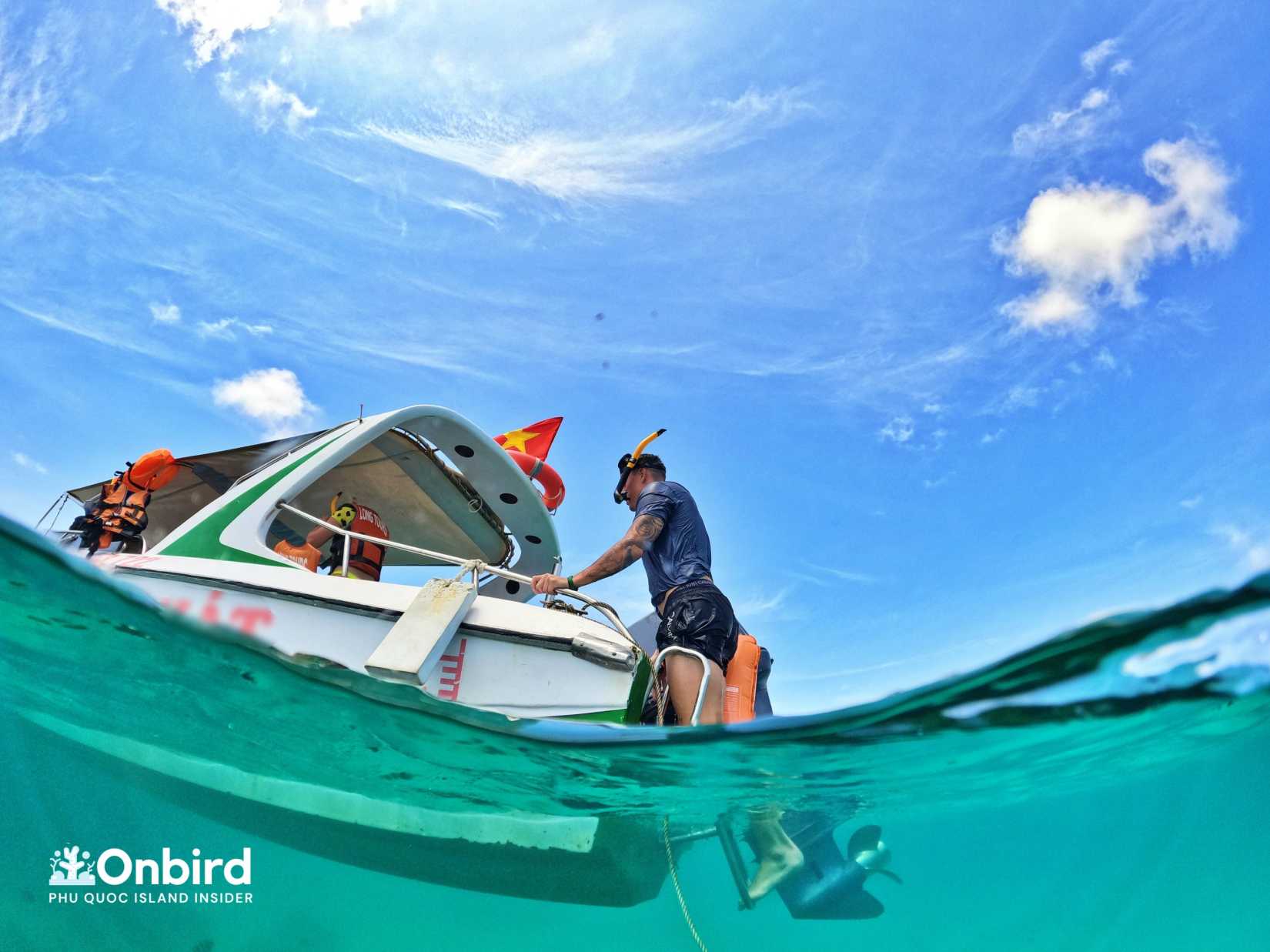
July – September: Rainy Season (Autumn)
Note: The underwater visibility is nothing to do with the rain or the sunshine, regardless of season but other factors, OnBird found that in the rainy season, the average underwater visbility in South Phu Quoc is much better than those in the dry season.
Entering July, Phu Quoc Island’s weather begins to change more clearly due to the influence of tropical low pressure waves that form storms in the East Sea, drawing winds from the southwest. At this time, the western sea was rough, strong southwest winds blew with greater intensity, shaking the trees on the island. There were sunny days but the sea was still very rough. Number of days of strong seas leading to ban on boat operations and Phu Quoc seaport for 5-10 days. After these 5-10 days, the sea is calm again, sometimes it rains but the weather is still quite nice, sunny and warm, conditions are quite good for scuba diving and snorkelling despite the rain.
A period of 5-10 days of extremely strong seas leads to some entertainment activities having to stop operating to ensure safety, such as the Hon Thom Cable Car, which can stop accepting guests when the wind is strong to ensure safety. Even heavy rain combined with strong winds also caused Phu Quoc airport operations to stagnate to ensure safety. During these months, OnBird always stops tour activities about 5-10 days/month, the remaining days still operate safely and normally.
For scuba diving and snorkeling experiences organized by OnBird, guests will be provided weather and water conditions forecast, hydrological conditions about 1 week before departure date with accuracy up to 90% – 95%. From there, guests plan to prepare for the journey in the most accurate and flexible way as well as experience the best Phu Quoc coral viewing possible.
- • Rainfall: at night and during the day, when it’s sunny it can turn to rain or if it’s heavy rain it will stop after 20-30 minutes and the sun will return.
• Wave level: the average number of calm sea days is 15-20 days/month, the number of days with strong seas requiring port closures is 5-10 days/month (within 3 months July-August-September) due to the impact of East Sea storms . Besides these 5-10 days of port ban, the weather is very good for diving activities, sunshine and underwater visibility are still good.
• Typical weather: rain at night and early morning, rain and sunshine in the central area is erratic, some days of the month has persistent rain, especially in September (the end of rainy season)
• Number of days with very strong seas forcing ships to stop: 5-10 days/month
• Recommendation: Do not swim or participate in activities on the west coast of Phu Quoc island (From Vinpearl beach area extending down to Intercontinental, Regent)
• Safe beach areas: East Coast of Phu Quoc: Sao beach – Khem beach with calm, clear water (Marriot, Premier Village, Premier Residence, New World)
Advanced advice: If tourists are vacationing in Phu Quoc during this period, please contact OnBird to receive the most accurate and reliable advice on weather conditions and sea water conditions for island hopping or scuba diving activities. professional. OnBird Phu Quoc has built our own standard data set and a professional sea water condition forecast model, helping tourists avoid confusion in assessing weather developments, which change erratically during the fall period in Phu Quoc.
See more of our Guest Experience articles here.
3. ARE THERE STORMS IN PHU QUOC?
The area consists of Phu Quoc, Ca Mau, and Kien Giang was once considered a Holy Land of 100 years without storms. Because of its special location in the South East Sea (Vietnam), the probability of storm occurrence is very low, most of which are caused by storms. tropical depressions or circulating storms that hit central and northern Vietnam after forming off the coast of the Philippines. According to records from historical documents, there have been no storms in the southernmost region of Vietnam in the past hundred years (Ca Mau, Kien Giang, Phu Quoc).
However, on the morning of November 1, 1997, a historical disaster occurred and remained in the memories of many people on Phu Quoc island in particular and Kien Giang and Ca Mau at that time. An area of low pressure about 300 km southeast of the Spratlys and quickly strengthened into the fifth storm in the South China Sea in the same year, international name Linda. The historic storm moved quickly, on the morning of November 2, 1997, it reached a strength of 9-10 (winds of 105 km/h), 100 km east of Con Dao. On the night of November 2, the center of the storm entered Bac Lieu – Ca Mau, affecting most of the Southwest region and the entire Phu Quoc island. The powerful sweeping force when the storm sweeps in the low latitudes, right next to the coast where many people and fishermen live and fish near the shore. According to the report of damage caused by Typhoon Linda: nearly 3,000 people died (778 victims were found, more than 2123 victims were stuck at sea and could not find their bodies), more than 3000 fishing boats were sunk, 107,890 simple houses were destroyed, 120,000 hectares of aquaculture and 320,000 hectares of rice field were flooded, in Ca Mau (shield for Phu Quoc island) 128 people died, 1,164 people were missing and 600 people were injured.
In Phu Quoc, fishermen in An Thoi felt it more clearly, Many people have a subjective mentality that the storm would not roll through because they had never known what a storm is in their whole life before. Single houses with corrugated iron roofs were swept away in the night, the wind howled, boats were wrecked and drifted. Mr. Ho Phi Thuy, the founder of Ngoc Hien Pearl Farm, also nearly lost his life that day when he was floating on his boat off the An Thoi archipelago (his boat now is on display at Ngoc Hien Pearl Showroom). The storm hit Phu Quoc in the night, everything was too fast, the next day he woke up on his boat and he no longer believed that he was still alive, from then on he decided to quit his job at sea and move through pearl culture and made the brand name Pearl Ngoc Hien Phu Quoc as it is today.
Evidence shows that although it is an area that is almost not affected by storms, anything can happen, especially in the period of September-October-November when low lying areas in the East Sea form continuously, but in terms of Overview Phu Quoc island is still a land favored by mother nature, one of the most peaceful and peaceful seas in Vietnam.
4. WHAT IS THE BEST TIME TO VISIT PHU QUOC?
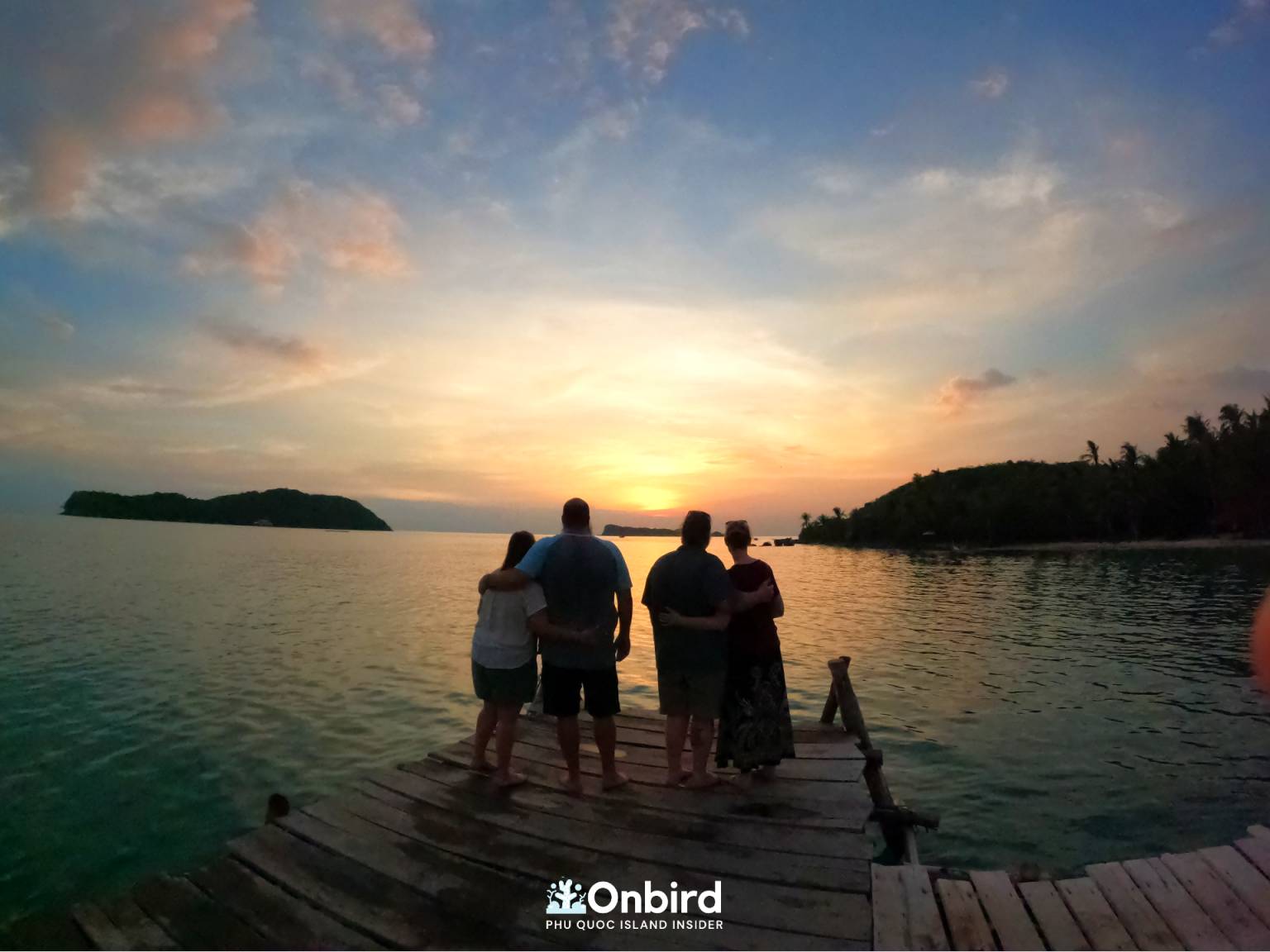
According to observations and weather data OnBird collected and evaluated: from October to April is the most ideal period to travel in Phu Quoc with all kinds of fun, not too worried about the weather outside. excluding the element of rough seas (for coral diving activities).
Early summer (April – end of July): the weather changes to the rainy season, but the rainfall is still small and the hours are short (rainy clouds) so it is not a concern, the number of bad weather days compared to good weather is about 2 -5%.
From August, especially September and may last until October due to the influence of some storms and low pressure in the East Sea, may cause Phu Quoc tourism to completely stop due to violent seas. and prolonged heavy rain, this period is especially limited to go to Phu Quoc. However, mixed with days of low pressure and storms, in general, the weather still has sunny days.
In case you have come to Phu Quoc and have a need to check the weather, especially the weather, the hydrological conditions of the sea water to plan a visit to the islands or participate in the experience of scuba diving and snorkeling. snorkeling) or scuba diving can contact OnBird 1 week in advance to receive accurate weather advice.
5. IS THIS GOOD TO DO SNORKELING & SCUBA DIVING IN PHU QUOC IN THE SUMMER AND RAINY SEASON?
SCIENTIFIC SNORKELING: THE BEST TIME TO SNORKEL IN PHU QUOC ISLAND BY ONBIRD PHU QUOC
Here are some pictures taken by OnBird during the coral exploration experiences (scuba diving and snorkeling) in Phu Quoc during the early rainy season (May – July), thank to our own proactive weather and water conditions forecasting model and the understanding of hydrological conditions in Phu Quoc then we can organize snorkeling trips with appropriate timeframes and dates to give guest the best experiences.
Not like regular thinking, the beginning of the rainy season (May to August) with warm water temperature and many sunny days with days of calm water too creates ideal conditions for exploring some of the coral reefs in the South Island of Phu Quoc. Some coral reefs are very beautiful but are almost only accessible during the rainy season (summer) while the dry season is almost inaccessible due to adverse hydrological conditions: big waves and strong currents.
The coral reefs that are beautiful and suitable for safe scuba diving in the early and peak stages of the rainy season in Phu Quoc that OnBird tracked and observed include:
- North-east Coral Reef: coral city (early rainy season diving spot) with about 22 different species
- Coral Mountain: Phu Quoc’s largest Cactus coral reef
- Shallow reef: Table coral kingdom, where there are the largest table coral colonies in Phu Quoc
- Coral Steep: coral-covered slope
So what are the ideal periods for snorkeling & scuba diving to discover Phu Quoc coral?
The dry season and the beginning of summer time (May – July) are still the most ideal time to explore the coral reefs of Phu Quoc with a lot of sunny days. The beautiful coral reef for diving & snorkeling in this period are:
- Half-moon Reef
- Coral Mountain
- Coral Steep
- U-Turn
- North-east Coral Reef
See more details about scuba diving and snorkeling experiences with OnBird Phu Quoc from here.



 日本語
日本語 中文
中文 한국어
한국어 Tiếng Việt
Tiếng Việt